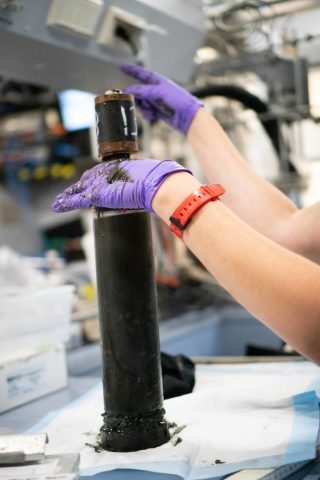The WaterWord: Methanotroph
Definition:
- Wrapping up our fourth and final methane-based EarthWord for this cruise! We’ve spent the last several EarthWords talking about what makes the methane and how it gets into the environment, so now let’s talk about what eats the methane: methanotrophs.
- Also called methanophiles (methane lovers), these microbes can be either bacteria or archaea, which are single-celled organisms that used to be classified as bacteria, that rely on methane as their sole source of energy and food.

Etymology:
- Methanotroph is made up of two parts: methane and troph. Methane comes from the French word methylene, itself made up of the Greek word methy (wine) and hyle (wood). This is because methylene was detected in wood alcohol. The -troph ending, meanwhile, comes from the Greek word trophe, meaning “food or nourishment.”
Use/Significance in the Earth Science Community:
- Methanotrophs can be found all over the world, wherever there is methane for them to eat. They can live in low oxygen environments and high oxygen environments, and in extremely hot or extremely cold regions too. Because methane is a significant greenhouse gas, methanotrophs are of great interest to climate scientists.
U.S. Geological Survey/Schmidt Ocean Institute Use:
- USGS and SOI are collaborating on a research cruise off the coast of Oregon and Washington that will study methane seeps in a region known as the continental margin. One of the questions that the scientists will be looking at is how much of the methane from the seeps reaches the surface of the ocean, and methanotrophs play a significant role in determining that, since they are the primary thing that removes the methane from the water column.
- Previous USGS research into methanotrophs has included their role in preventing methane from undersea gas hydrate breakdown reaching the ocean surface to cave ecosystems in Mexico and contaminant clean-up at former mines.

